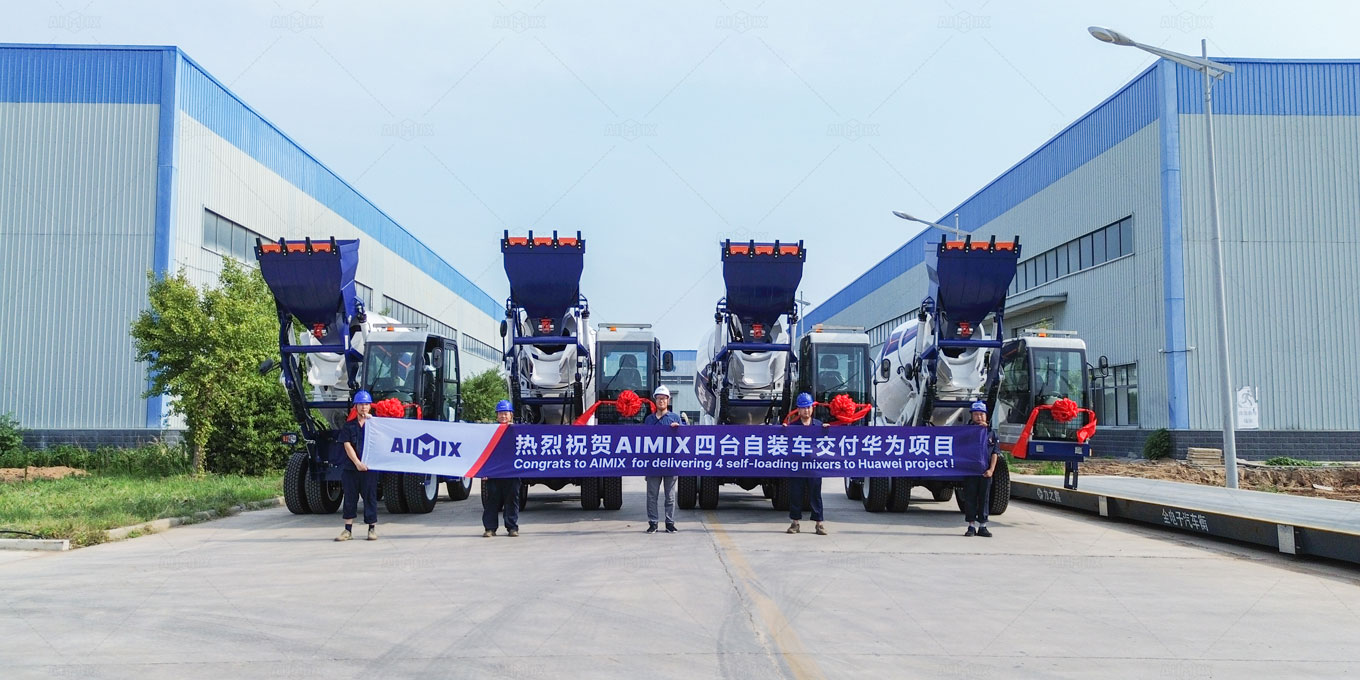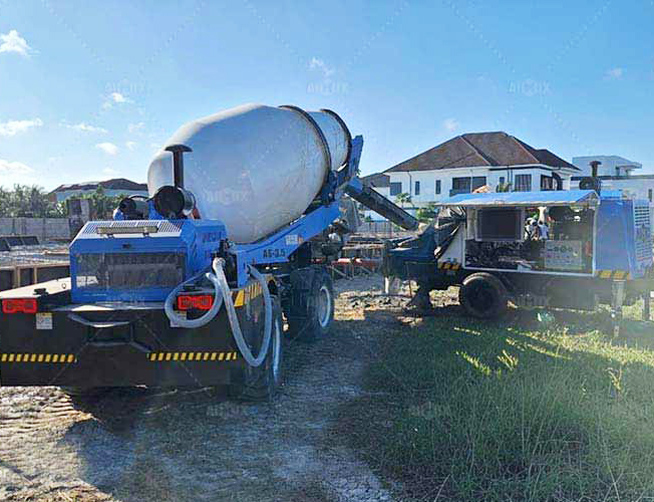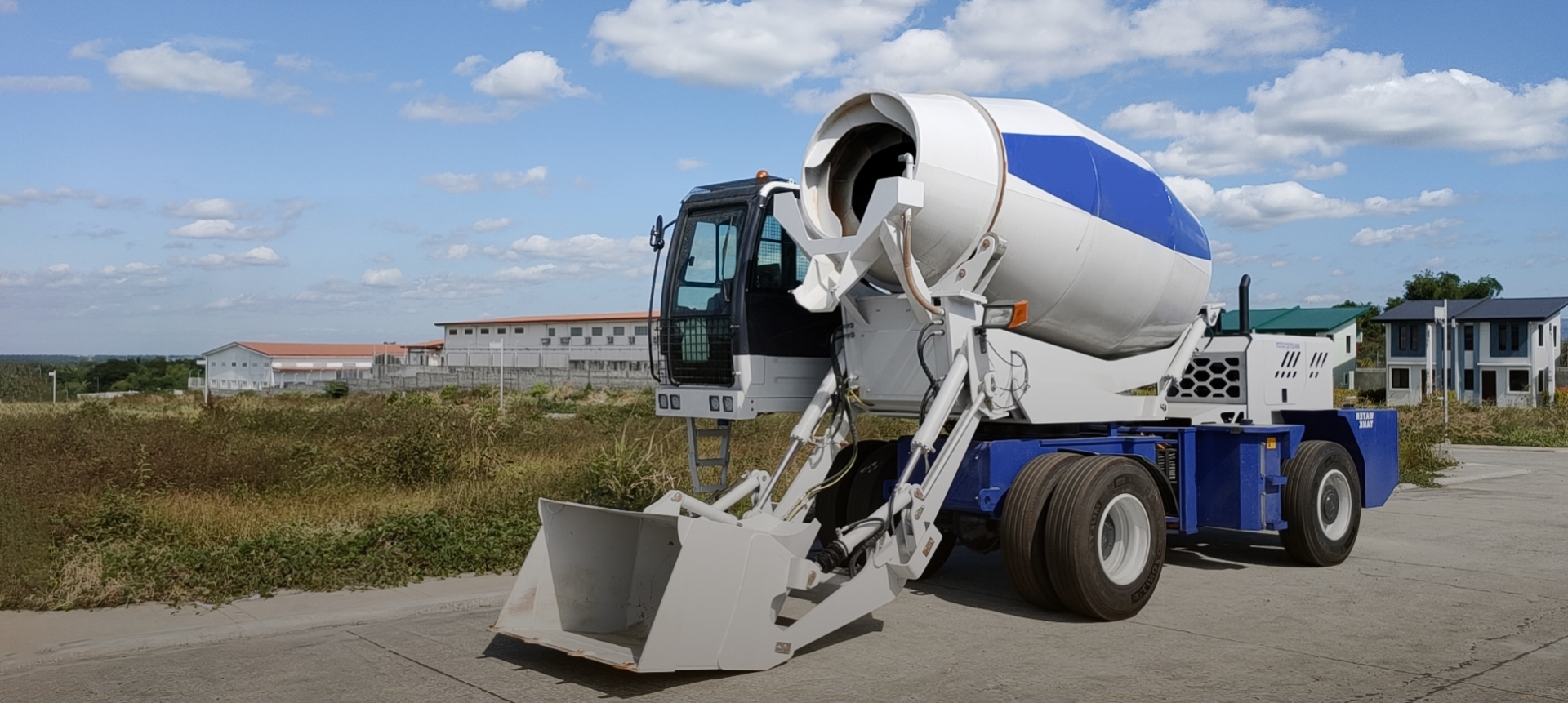The self-loading cement mixer represents a pinnacle of jobsite innovation, combining the functions of a concrete batching plant and a transit mixer into a single, remarkably autonomous machine. This mechanical symphony allows a single operator to load raw materials, mix the concrete, transport it, and discharge the final product with unprecedented independence. At the heart of this multifaceted capability lies a network of components that transform brute power into controlled, precise motion: the hydraulic system.
Far more than a simple source of force, modern hydraulics are the unsung guardians of both the machine and its operator. They imbue the self loading cement mixer with a level of stability and operational safety that mechanical systems simply cannot match. By understanding the nuanced role of these systems, we can appreciate how they mitigate risk, prevent catastrophic failure, and create a more secure working environment on even the most challenging and uneven terrain.

The Foundation of Control: Precision in High-Risk Operations
Hydraulic systems excel in delivering smooth, metered power exactly where and when it is needed, a critical feature for the complex choreography of a self loading big concrete mixer‘s duties.
Gradual Power Application and Load Handling
The process of scooping aggregates and sand from a ground pile is a task fraught with potential for instability. A sudden, jerking motion could easily upset the balance of the entire machine. Hydraulic circuits, with their inherent fluid dynamics, provide a cushioning effect. The operator’s control lever does not simply engage a clutch; it precisely modulates the flow of hydraulic fluid to the motors driving the loading arm and shovel. This results in a smooth, gradual application of force, allowing the bucket to bite into the pile without lurching. This same controlled power is essential for the delicate yet powerful act of raising the loaded bucket. The hydraulic rams extend with unwavering steadiness, ensuring the heavy load is lifted smoothly and predictably, maintaining the machine’s center of gravity and preventing dangerous sway.
Steering and Maneuverability Under Load
Navigating a congested or rough construction site with a full drum of liquid concrete is a significant challenge. The weight is immense and constantly shifting. Hydraulic power steering is not a luxury here; it is a fundamental safety system. It drastically reduces the physical effort required by the operator, minimizing fatigue and allowing for sharper focus on the surroundings. More importantly, it provides responsive and positive control, enabling the operator to make precise steering corrections to avoid obstacles and navigate tight corners without the wheel kicking back violently from an unseen bump. This precise control is vital for preventing roll-overs and collisions when the machine is at its most vulnerable—fully loaded and in motion.

Inherent Safety Mechanisms and Stability Assurance
Beyond providing control, hydraulic systems are designed with integrated safety features that act as a vigilant, mechanical failsafe.
Load-Holding Valves and Drift Prevention
One of the most critical safety features in any hydraulic system involving lifting is the load-holding valve. Imagine the loading arm raised high to discharge materials into the mixer drum. A sudden hydraulic hose failure or a pump malfunction in a non-equipped system would result in a catastrophic, uncontrolled drop of the heavy arm. Load-holding valves, often called counterbalance valves, mechanically lock the hydraulic fluid in the cylinder, preventing any descent until the operator deliberately commands it. This same principle applies to the mixer drum’s tilt function, ensuring it remains securely in position during transit or mixing. This inherent mechanical redundancy provides peace of mind and protects personnel working near the machine.
Pressure Relief and System Protection
Hydraulic systems are governed by pressure relief valves, which act as the guardians of the entire system. If a motion is blocked—for instance, if the loading arm encounters an immovable obstruction—pressure within the circuit will spike. A mechanical system might shear a pin or damage a gearbox. In a hydraulic system of cement mixer machine, the relief valve instantly opens at a pre-set maximum pressure, diverting the fluid and safely relieving the strain. This prevents component damage, hose bursts, and potential structural failure. This automatic protection ensures that the machine’s powerful forces are kept within safe, engineered parameters, preserving both the equipment’s integrity and the safety of the operator from flying debris or sudden, violent mechanical failure.
Enhancing Operator Confidence and Worksite Security
The culmination of these hydraulic advantages is an environment where the operator can perform their duties with greater confidence and reduced stress.
Reduced Physical Strain and Fatigue
Before the widespread use of hydraulics, operating heavy machinery was a physically grueling task requiring significant strength to manipulate levers and clutches. Modern hydraulic controls are remarkably intuitive and require minimal physical effort. This ergonomic design drastically reduces operator fatigue over a long shift. A less fatigued operator is a more alert operator, one who is better able to maintain situational awareness, spot potential hazards, and execute complex maneuvers safely. The machine becomes an extension of the operator’s will, rather than a physical adversary to be conquered.
Predictable and Repeatable Performance
The consistency of a well-maintained hydraulic system builds a foundation of trust. An operator learns the machine’s rhythms and responses, knowing that a given input on a control will yield a predictable and smooth output. This predictability is a powerful safety tool. There are no surprises. When discharging concrete into a delicate formwork or positioning the chute near workers, this repeatable precision ensures that the operator can place the material exactly as intended, minimizing the risk of accidental spills or misdirected pours that could endanger personnel or compromise the structure. This reliable performance transforms the AIMIX self-loading mixer from a powerful tool into a trusted partner in achieving both productivity and safety.
